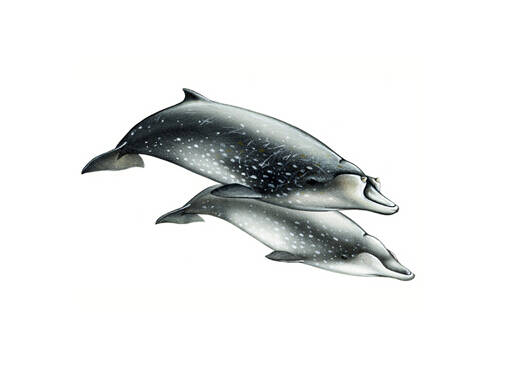Hector's Beaked Whale
IUCN
LCBasic Information
Scientific classification
- name:Hector's Beaked Whale
- Scientific Name:Heck's beaked whale, New Zealand beaked whale, Heck's beaked whale
- Outline:Cetacea
- Family:D.whale
Vital signs
- length:No verification information
- Weight:No verification information
- lifetime:No verification information
Feature
The beak is relatively short and has many scratches and scars.
Distribution and Habitat
The main information is from the Southern Hemisphere, where it seems to be distributed around the poles and south of the Tropic of Capricorn, with a circumpolar distribution. Most records are from New Zealand, but there have also been reports from Falkland Bay in the Falkland Islands, Lothrin River in South Africa, Adventer Bay in Tasmania, and Tierra del Fuego in southern South America. Four strandings occurred in California in 1975, 1978, and 1979. In addition, there have been two possible sightings within five years, both in the same small area of southern California. Therefore, the normal distribution of Hector's beaked whales in the North Pacific cannot be determined, as the California individuals may represent a small group of stray individuals. Alternatively, the distribution may be larger, even extending to other northern temperate waters.
Appearance
Males have slight forehead ridges, very prominent crescent-shaped fumaroles, and scratches on their bodies, sometimes in an oval shape, especially in males. The small dorsal fin is triangular, with a blunt end, and the trailing edge is slightly concave (there are individual differences). The back and rear section are dark gray or brownish gray, the beak is proportionally short and light gray or white, and there may be barnacles attached to the teeth. The head is slightly smaller, the pectoral fins are small, the front and rear edges of the pectoral fins are parallel, and the abdomen is light gray. Gray or white, the body is spindle-shaped, often white around the belly button, and the tail shaft is narrow.
The back is gray; only the ventral surface of the male's caudal fin is white, and the adult's caudal fin is not notched (there are small notches in juveniles).
Details
Hector's Beaked Whale was first discovered in 1866, but until 1975, there were only 7 decaying specimens, all in the Southern Hemisphere. The first identifiable male whale was found in 1978; there are now more than 20 specimens, 4 of which are stranded in California, USA, indicating that the distribution may be as wide as the North Pacific. There are few reports on live examinations, because most of the consultations are from bones or skulls. Despite this, there are still possible sightings, all in California: In July 1976, a pair of Hector's whales.html">Beaked Whales were photographed off Catalina Island; in September 1978, a pair was also found 80 kilometers west of San Gossip.

There are scratches on the body of Hector's beaked whales, sometimes in an oval shape, which is especially common in males. It can be seen that males like to fight, probably because of the competition for mates. In the two sightings, Hector's beaked whales have a tendency to actively approach ships, are not dangerous to people and are more curious about people. They often appear in pairs, which may be the living habit of this species, but because the number of sightings is too small, it is impossible to determine its authenticity.
Protect wild animals and stop eating game.
Maintaining ecological balance is everyone's responsibility!








